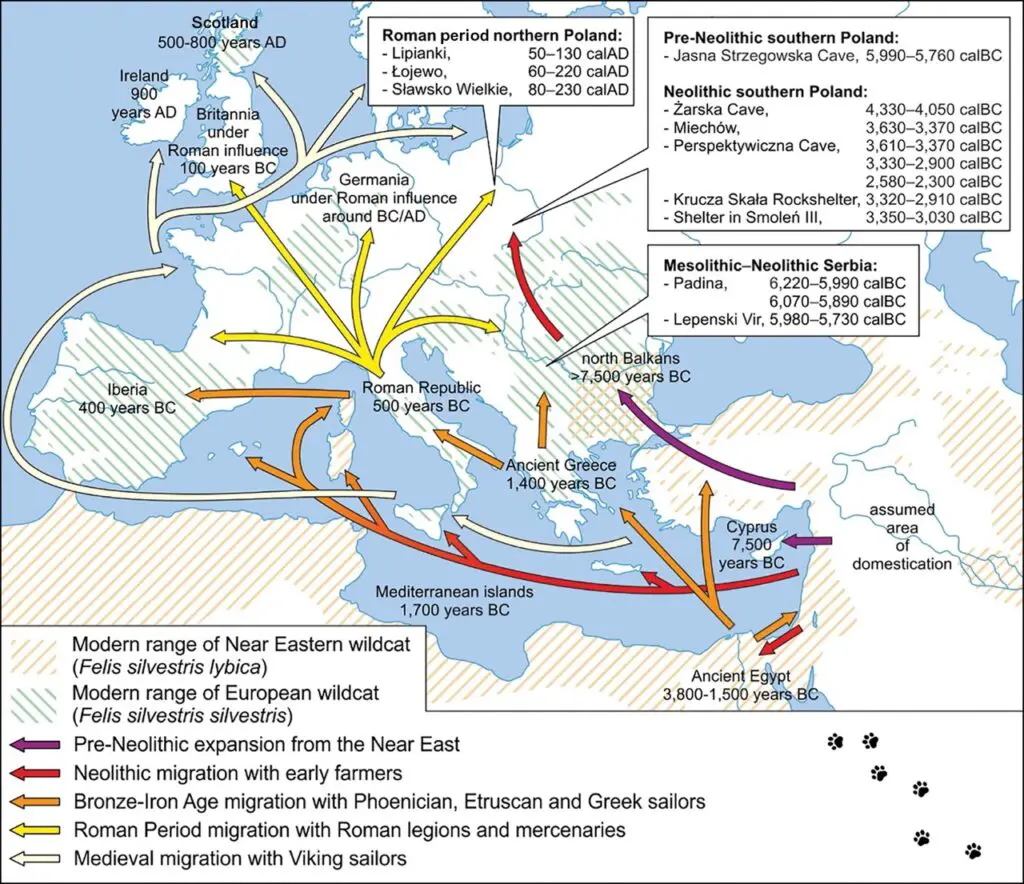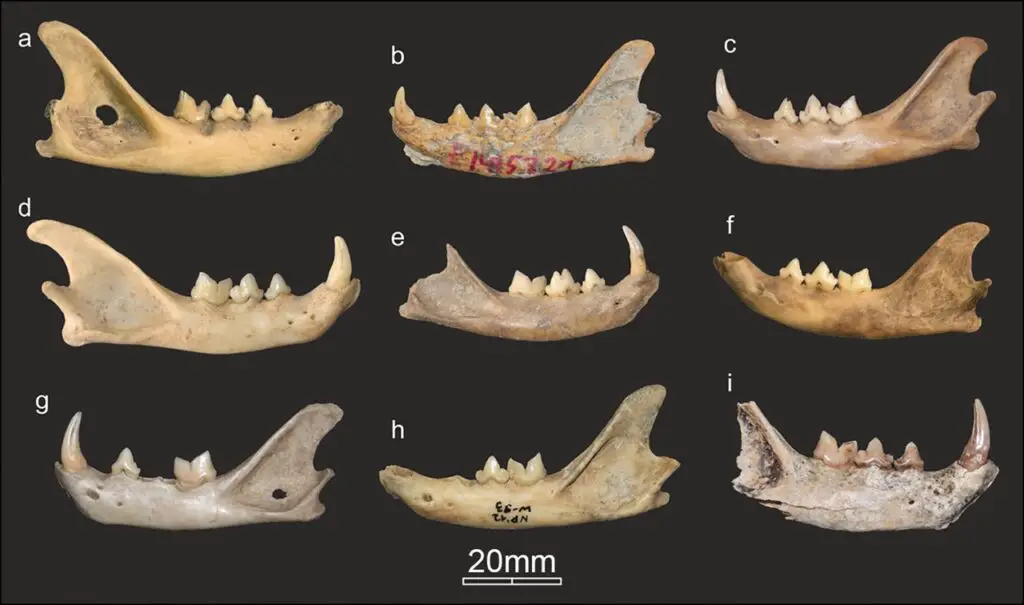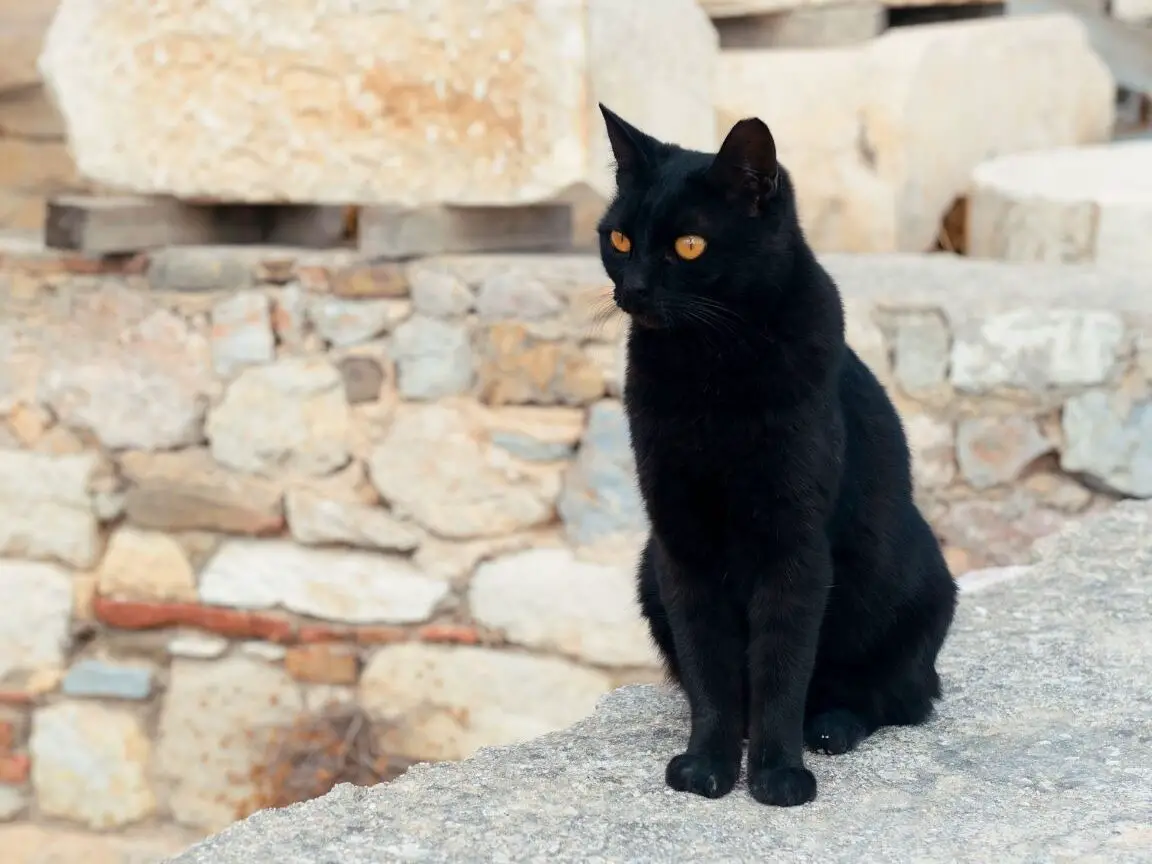A study published by Cambridge University Press reveals new information about the ancient migration and domestication of cats in Europe. Following the arrival of their wild ancestors in Europe from the Near East (the modern Middle East and Western Asia) these cats migrated many millennia ago. Ultimately, the researchers uncovered evidence that Near Eastern wildcats may have arrived in Central Europe a few thousand years earlier than previously thought.
Cats Have Been in Central Europe for a Very Long Time
Researchers have looked at the results of genetic studies and radiocarbon dating tests of the remains of both wild and domestic cats, covering an era ranging back approximately 10,000 years, to the Late Pleistocene period, and moving forward to the late Middle Ages.
Research Findings
The goal of the research project was to uncover as many details as possible about the process of the domestication of cats in central Europe. What the researchers found, however, pushed the previously established timelines back more than a thousand years! This discovery means that wildcats were migrating westward and northward at a surprisingly early date. See the map of the migration patterns:

Simplified routes for the early expansion of Felis silvestris lybica across Europe (based on our direct dating of the earliest Felis bones from Poland and Serbia in combination with data from Vigne et al.2004; Driscoll et al.2007; Faure & Kitchener 2009; Krajcarz et al.2016, 2020; Ottoni et al.2017; Baca et al.2018). Age ranges are radiocarbon ages in years BC/AD produced using OxCal v.4.4 (at 95.4% probability), calibrated using the IntCal20 calibration curve (Bronk Ramsey 2009; Reimer et al.2020) (figure by M.T. Krajcarz, using source data from The IUCN Red List of Threatened Species
Unanswered Questions about Cats and the Earliest Neolithic Farmers
If wildcats were roaming Central Europe while the first farming communities were being formed, did wildcats and humans have a symbiotic relationship? If so, did this lead to the semi-domestication of wildcats? Just exactly how far Early Neolithic cats may have penetrated into European territory is unknown. Uncertainty remains about interbreeding of cats between Near Eastern and European wildcats. To track ancestry, ancient cat mandibles (jaw bones) were collected and analyzed.

Selected mandibles of Near Eastern wildcats/domestic cats (a–f) and European wildcats (g–i) (species attribution based on mtDNA): a) Poland, Miechów site 3 (Neolithic); b–c) Poland, Łojewo site 4 and Sławsko Wielkie site 16 (Roman period); d–e) Serbia, Caričin Grad site (Early Byzantine period); f) Poland, Miechów site 3 (Middle Ages); g) Poland, Perspektywiczna Cave (Neolithic); h) Poland, shelter in Smoleń III (pre-Roman period); i) Poland, Perspektywiczna Cave (Middle Ages) (photographs by M. Krajcarz).
Cats Have Been Shrinking
The first domesticated cats were about the same size as European wildcats, but by Roman times, when cats had become a popular household pet, domesticated felines were noticeably smaller. Over the next few hundred years, they continued to decrease in size, until they were actually smaller than modern cats during the medieval period.
Read The history of the domestic cat in Central Europe and if you liked this story, you may also like Tiny Cats, Big Attitude: 9 Small Wild Cats and The Fierce Lives They Lead or ready about A Brief History of House Cats
